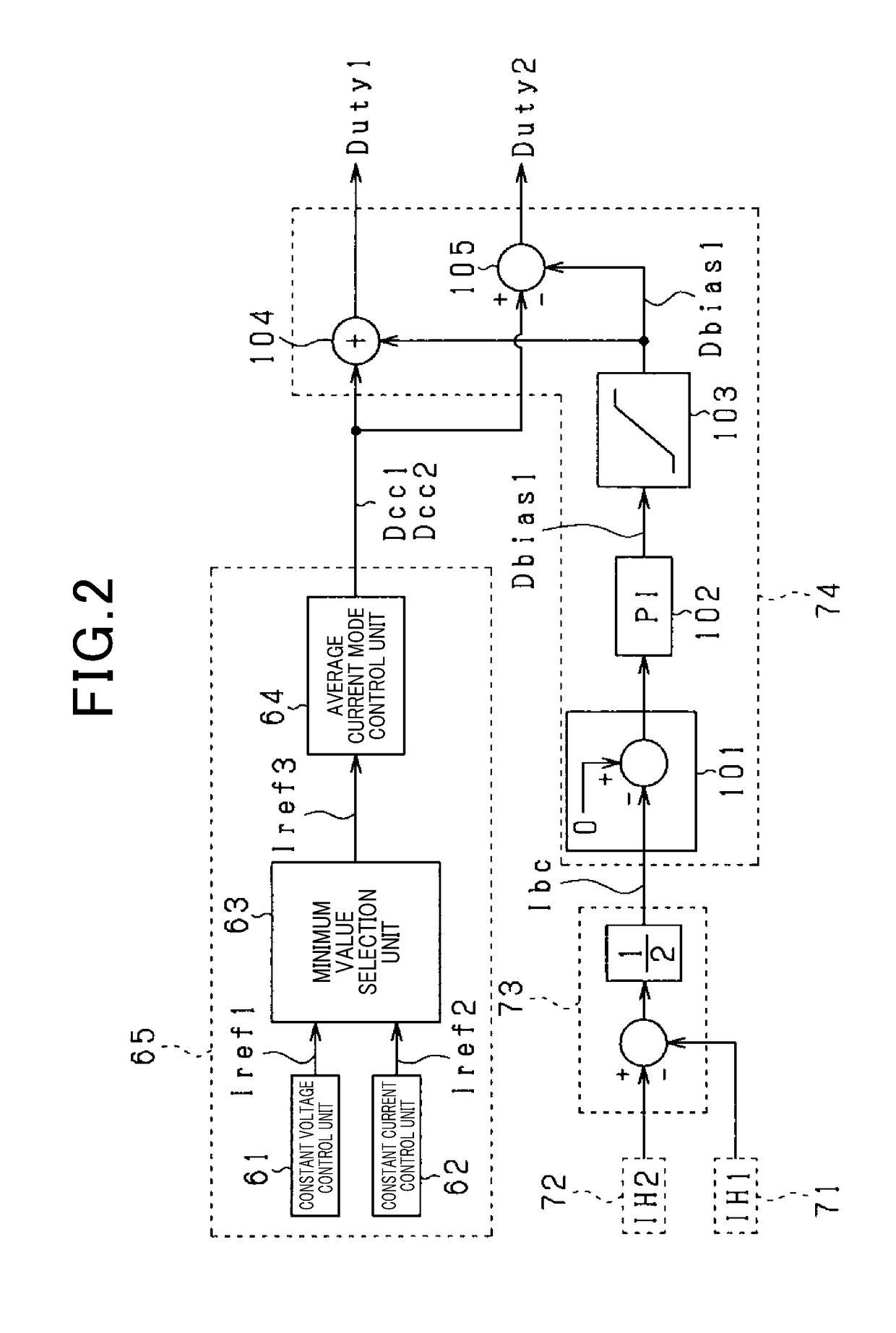Control apparatus
a control apparatus and control technology, applied in the direction of power conversion systems, dc-dc conversion, instruments, etc., can solve the problems of low accuracy of magnetization bias prediction, low accuracy of current detection device, and inability to accurately correct so as to prevent offset errors, reduce the magnetization bias of the transformer, and achieve the effect of appropriately reducing the magnetization bias
- Summary
- Abstract
- Description
- Claims
- Application Information
AI Technical Summary
Benefits of technology
Problems solved by technology
Method used
Image
Examples
first embodiment
Modification of First Embodiment
[0097]The prediction unit 73 shown in FIG. 2 may calculate a deviation between the first current IH1 and the second current IH2 and output the deviation. In this case, the PI control unit 102 may calculate the first correction value Dbias as a control input used for a feedback control to control the calculated deviation to be 0.
second embodiment
[0098]According to the second embodiment, configurations different from that of the first embodiment will mainly be described.
[0099]According to the second embodiment, the control unit 60 performs a peak current mode control in which OFF timings of the first and second switches Q1 and Q2 are set based on the peak value of the primary side current IL flowing through the first circuit 40.
[0100]FIG. 8 is a functional block diagram illustrating a function of a peak current mode control in functions of the control unit 60. In FIG. 8, the primary side setting unit 65 is provided with a first peak current mode control unit 67 that sets the first drive command value Dcc1 of the first switch Q1, and a second peak current mode control unit 68 that sets the second drive command value Dcc2 of the second switch Q2.
[0101]The first peak current mode control unit 67 is provided with a DA converter 341, a comparator 342, an adder 343, a RS flipflop 347, and a Duty limiting unit 348. First, the comma...
third embodiment
Modification of Third Embodiment
[0138]In the third embodiment, the ON periods of the third to sixth switches Q3 to Q6 may be adjusted with the B mode. In the B mode in which the first and second switches Q1 and Q2 are both ON, the secondary winding voltage Vt is not exactly 0 so that current flows through the second circuit 50. Hence, even in the B mode, by adjusting the ON periods of the third to sixth switches Q3 to Q6, the secondary winding voltage Vt can be adjusted.
[0139]FIGS. 14A to 14F are an operation sequence illustrating a reduction process of the transformer 30 according to the modification. In FIGS. 14A to 14F, the ON periods of the third and sixth switches Q3 and Q6 are extended to the B mode from the A mode. Also, the ON periods of the fourth and fifth switches Q4 and Q5 are extended to the B mode from the C mode. Therefore, during the ON periods of the third and sixth switches Q3 and Q6 in the B mode, the secondary winding voltage Vt increases by a voltage difference ...
PUM
 Login to View More
Login to View More Abstract
Description
Claims
Application Information
 Login to View More
Login to View More - R&D
- Intellectual Property
- Life Sciences
- Materials
- Tech Scout
- Unparalleled Data Quality
- Higher Quality Content
- 60% Fewer Hallucinations
Browse by: Latest US Patents, China's latest patents, Technical Efficacy Thesaurus, Application Domain, Technology Topic, Popular Technical Reports.
© 2025 PatSnap. All rights reserved.Legal|Privacy policy|Modern Slavery Act Transparency Statement|Sitemap|About US| Contact US: help@patsnap.com



